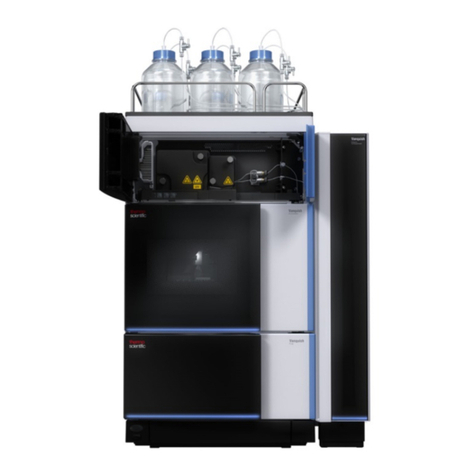
Contents
Vanquish Diode Array Detectors (VH-D10) Operating Manual Page 7
6.6 Important Operating Parameters .........................................................................94
6.7 Optimizing the Performance of the Detector.....................................................100
6.7.1 General Guidelines.................................................................................100
6.7.2 Overview of Optimization Parameters ..................................................101
6.7.3 Selecting the Data Collection Rate.........................................................102
6.7.4 Selecting the Response Time and Peak Width.......................................102
6.7.5 Optimizing the Bandwidth and Slit Width Settings................................103
6.7.6 Selecting the Reference Wavelength and Bandwidth ...........................104
6.8 Shutting Down the Detector...............................................................................106
6.8.1 Short-Term Shutdown (Interruption of Operation)...............................106
6.8.2 Long-Term Shutdown.............................................................................107
7 Maintenance and Service..............................................................111
7.1 Introduction to Maintenance and Service..........................................................112
7.2 Safety Guidelines for Maintenance and Service.................................................113
7.2.1 General...................................................................................................113
7.2.2 Flow Cells ...............................................................................................115
7.3 General Rules for Maintenance and Service ......................................................116
7.4 Routine and Preventive Maintenance ................................................................117
7.4.1 Maintenance Plan ..................................................................................117
7.4.2 Cleaning or Decontaminating the Detector...........................................118
7.4.3 Predictive Performance .........................................................................120
7.5 Performing a Wavelength Validation..................................................................121
7.6 Replacing the Lamp.............................................................................................123
7.7 Flow Cell..............................................................................................................126
7.7.1 Flushing the Flow Cell ............................................................................126
7.7.2 Removing the Flow Cell..........................................................................128
7.7.3 Installing the Flow Cell ...........................................................................130
7.8 Back-Flushing the Flow Cell ................................................................................134
7.9 Diagnostic Cell.....................................................................................................141
7.9.1 Installing the Diagnostic Cell..................................................................141
7.9.2 Removing the Diagnostic Cell ................................................................143
7.10 Replacing the Waste Line....................................................................................144
7.11 Replacing the Main Power Fuses ........................................................................146
7.12 Updating the Detector Firmware........................................................................148
7.13 Replacing the Doors............................................................................................150





























